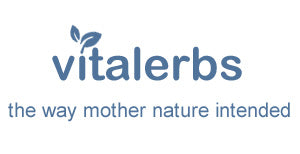An annual or biennial, 2-4 foot scruffy weed, with a milky sap. The leaves, are alternate, pointed,and deeply divided. They clasp the stem and twist sideways to become perpendicular with the ground. The central vein of the leaves is thick, riblike, prickly on one side and lighter green than the plant. A single stem starts with small, yellow dandelion-like flowers and seeds, then divides into many small, thin floral stems. Found throughout the world, along roadsides and gravelly, waste places, most abundant from 4,000 to 6,000 feet. It is a analgesic, antispasmodic, narcotic, and sedative. The milky juice, resembles a weak opium, without the tendency to upset the digestive system. It is safe for children or sensitive adults.
Indian women used the leaf tea to stimulate milk flow. Some medical people believe that the dried sap is psychological, because the taste and appearance is like that of opium poppy. Use the standard infusion, as needed.
UPC: 084783022091.
Origin(s): Albania, Croatia, United States.
Latin Name(s): Lactuca canadensis, Lactuca virosa.
Also known as: Lettuce Opium.
Plant Part(s) Used: Leaf.
Appearance: Green.
Aroma: Leafy.
Taste: Bitter.
GMO Status: Non-GMO.
Allergen: None.
Additives: Free of any additives or preservatives.
Applications / Preparations: Can be put into capsules, teas, salads or infused as an herbal extract. For cosmetic use can be put in an antiseptic wash.
Storage: Store in a sealed container in a cool, dry place.
Shelf Life: It is very difficult to pin down an exact expiration date for most single herbs as they do not really expire, they lose potency or strength over time but will still have value. Unlike synthetic material or drugs, herbs can contain many constituents that contribute to their medicinal effects. Even if when we know what the active constituents are, there are often many of them in a single herb, each with different rates of degradation. Some herbs lose their effect more easily. Other herbs that possess more stable compounds such as alkaloids or steroids will last much longer.
A huge part of the degradation rate of herbs depends also on the storage conditions of the herb, & even on the quality of the herb before storage – how it was grown, harvested, dried & processed. If the product is left in hot places or open to sunlight then it will degrade much quicker than if it was stored in cool, dry place & sealed tightly.
A good rule of thumb is that herbs should be stored no longer than 2-3 years but many herbs will have great strength much longer than that. To determine if a an herb is still good you can check the appearance & aroma. Herbs that are no longer acceptable will have lost much of its vibrant color & will instead appear dull & faded. The bigger key though is to smell the raw materials to see if the potent aroma is still present.
Warning: None known.




